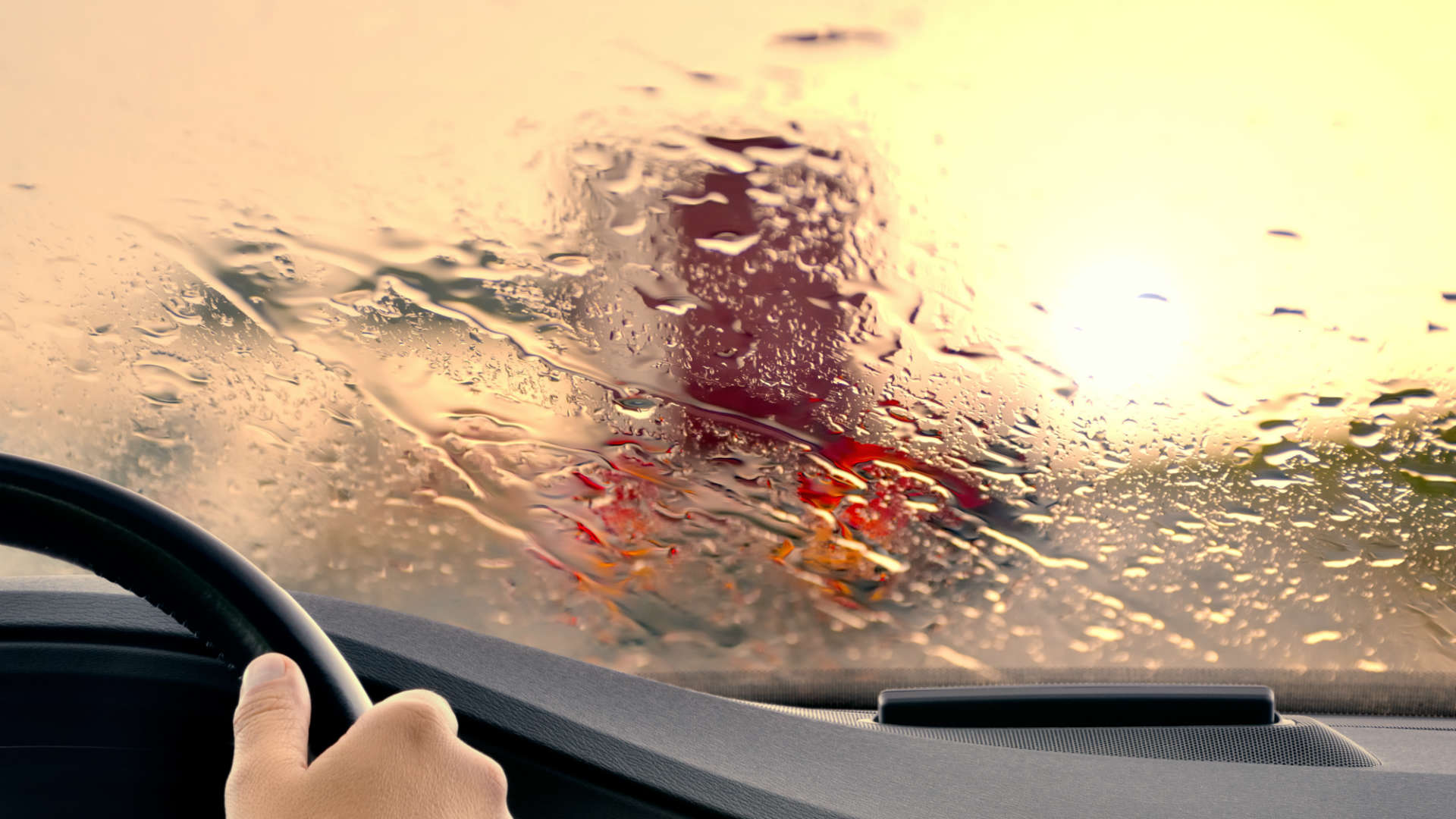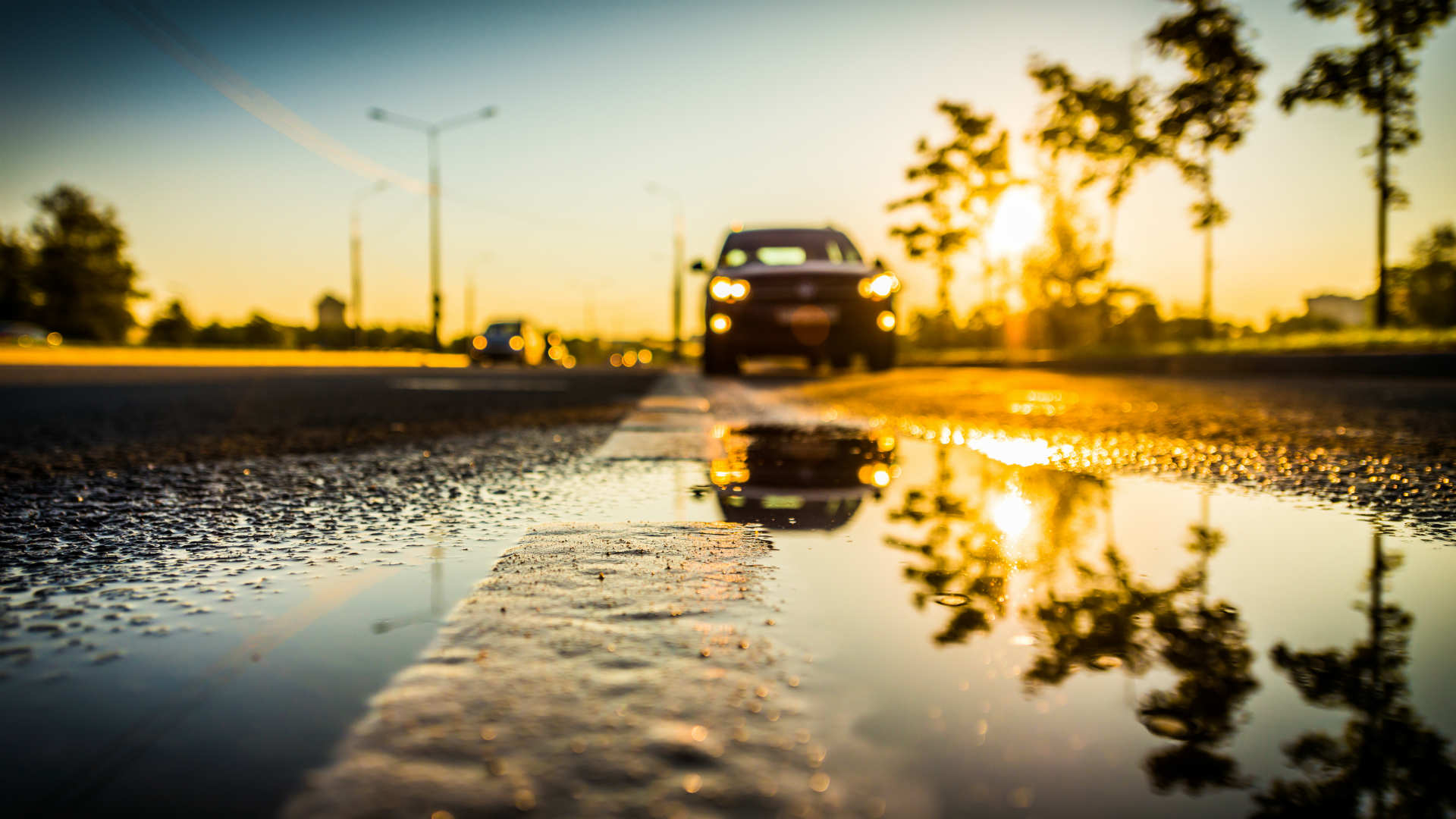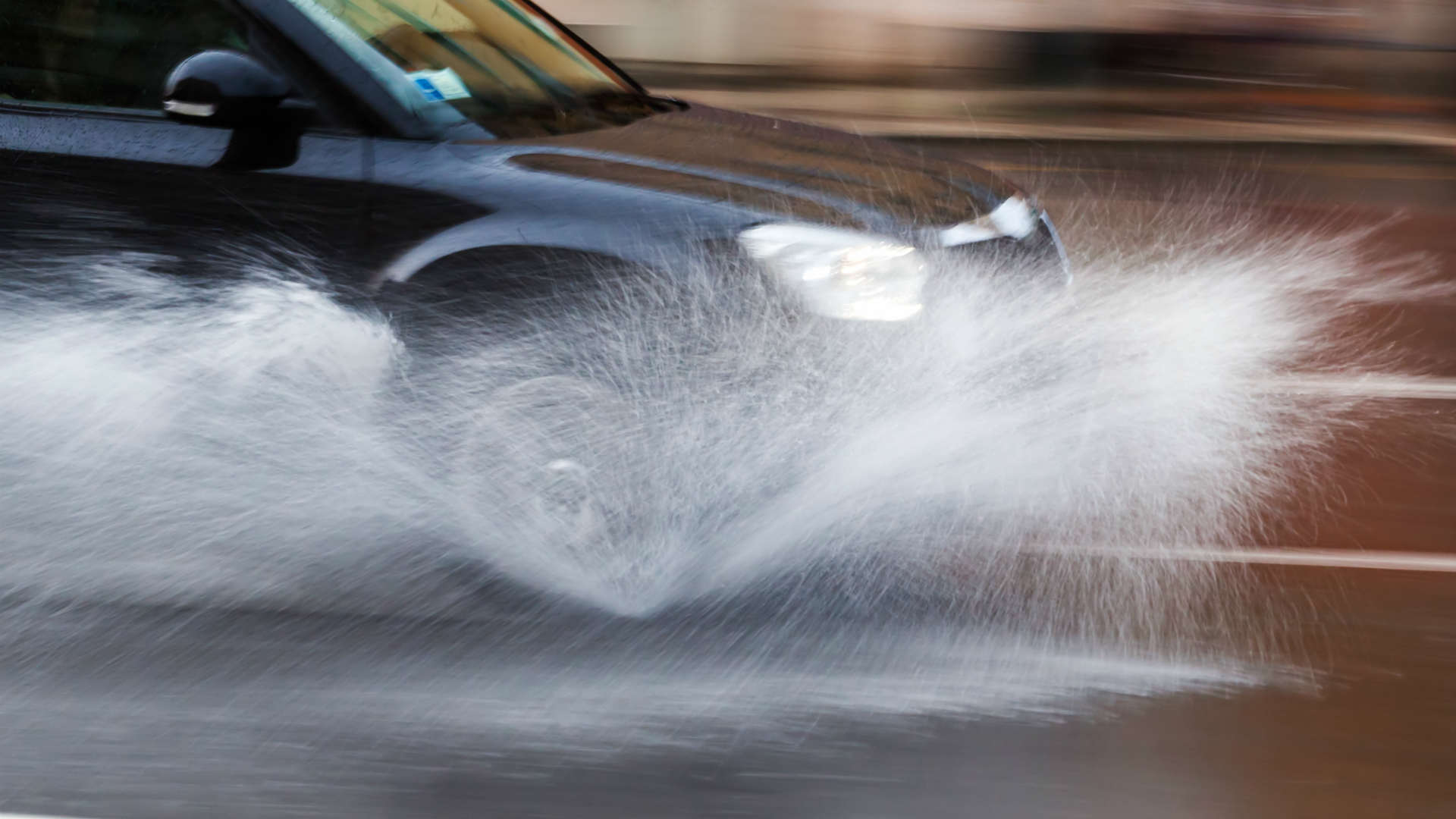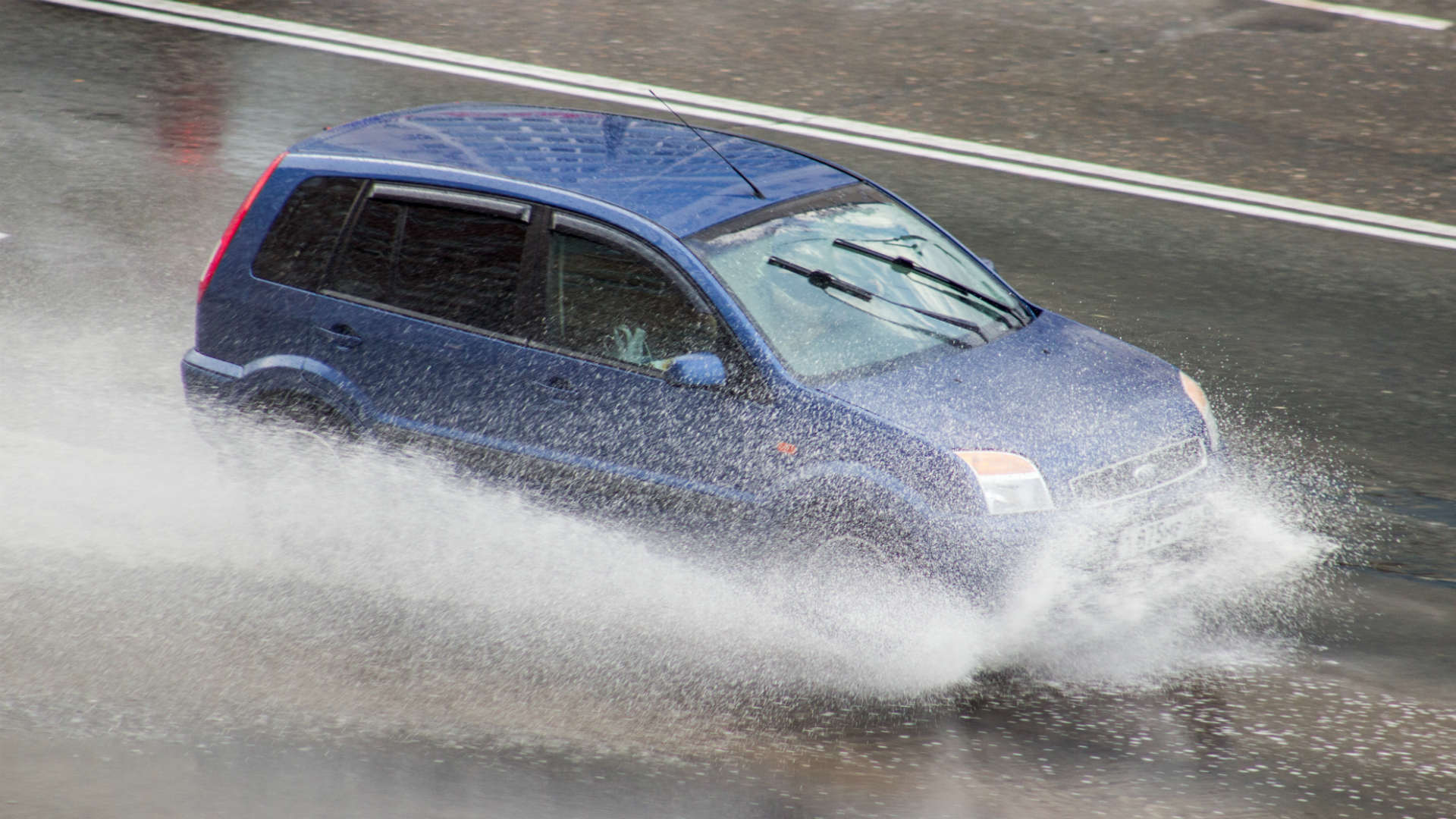
Summer rain can create hazardous driving conditions – particularly after a prolonged dry spell.
Whatever the temperature outside, the same advice for driving in rain applies. You should slow down, used dipped headlights, turn on your windscreen wipers and keep your distance from the vehicle in front.
The Highway Code says that in wet weather, stopping distances will be at least twice those required for stopping on dry roads. This is because your car’s tyres have less grip.
However, as an American motoring organisation points out, drivers are at greater risk in the moments immediately after it starts raining. Dr Bill Van Tassel, AAA national manager of driving training programmes, said: “Conditions are most dangerous during the first 10 minutes of a heavy downpour, as oil and debris first rise to the road’s surface, then wash away.
“Knowing how to handle poor traction reduces the potential for hydroplaning [aquaplaning], skidding or sliding off the road completely.”

This view was echoed by Howard Robinson, former chief executive of the Road Surface Treatments Association (RSTA), who said: “Wet roads after a prolonged hot, dry period can become slippery. In addition to ensuring that their tyres are in good condition and properly inflated, motorists should slow down and drive with care.
“During periods of prolonged hot weather, the bitumen in asphalt roads ‘bleeds’ through to the surface, reducing the texture depth and wet skidding resistance.”
Prepare your car for summer rain

The preparation for driving in summer rain begins before you start your journey; it’s too late if you get caught in a sudden downpour on the motorway. The following pointers should keep you safe:
- Check your windscreen wipers and replace them if necessary. Drivers of older vehicles could consider upgrading to newer ‘aero’ wipers.
- Ensure that you have sufficient windscreen washer fluid. Road grime, dead insects and dust can leave a greasy film on the car’s windscreen, which could restrict your vision with the wipers turned on.
- Check your tyres. Although the legal tyre tread depth is 1.6mm, we recommend changing your tyres when the depth reaches 3mm. Also ensure that tyres are inflated to the correct pressure.
- Check the weather forecast. If possible, time your journey to coincide with dry weather.
How to drive in summer rain

You’ve set off towards the summer sunset, but the weather has other ideas. Here are some tips for driving more safely in wet and warm conditions.
- Used dipped headlights – don’t switch to automatic headlights.
- Don’t rely on your daytime running lights. These could dazzle oncoming drivers in low-light conditions.
- Don’t use fog lights, which can mask brake lights and dazzle other motorists.
- Slow down to give yourself more time to react to hazards such as queuing traffic and standing water. The faster you drive, the greater the risk of aquaplaning (when a layer of water builds up between the car’s tyres and the road).
- Allow at least twice the stopping distance between you and the vehicle in front.
- Do not use cruise control.
For more general advice on driving in heavy rain and floods, check out the RAC’s in-depth guide.
ALSO READ:
What is a diesel particulate filter – and how to fix a blocked DPF